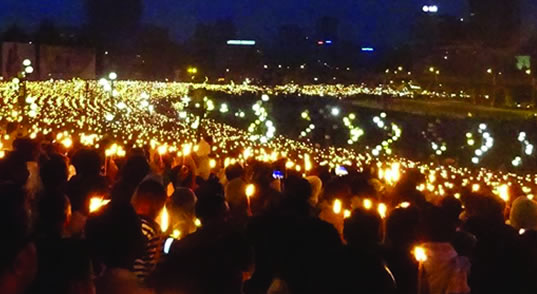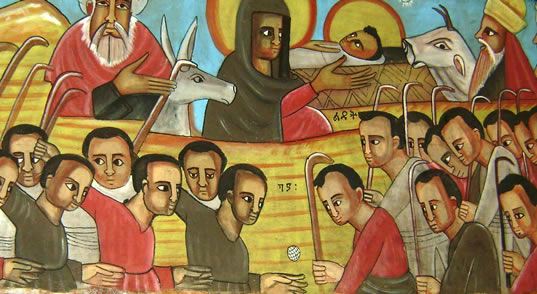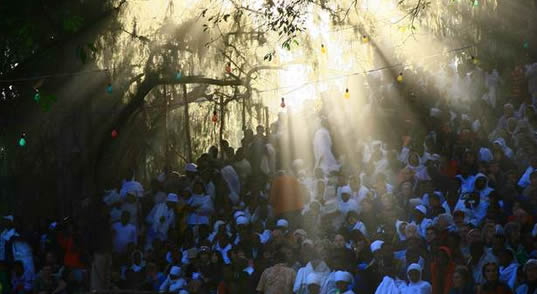


Meskel, which means “Cross”, is one of the major Ethiopian orthodox festivals which is celebrated on 27th September. Legend says that the cross upon which Christ was crucified was discovered in the year 326 by Queen Helena, mother of Constantine the Great. Unable to find the holy artifact, she set up long poles and set them on fire. Skyward raised the smoke and down it bent, touching the spot on the earth where the original cross was found buried. The finding of the True Cross is celebrated in Ethiopia on every 27 September (28 September on leap year).The celebration of Meskel assures the presence of the True Cross at mountain of Gishen Mariam monastery and also commemorates the events carried out by Queen Helena. In the central highlands, the festival begins on Meskal eve (26 September) by planting a green tree in town squares and village marketplaces. Everyone brings a pole topped with the beautiful yellow Meskal daisies, which are abundant in Ethiopia at the end of the rainy season, placed to form a towering pyramid which is then set alight.

Ethiopian Christmas, also called Genna, is celebrated on 7 January (8 January on leap year) to expresses the coming of the Lord to free mankind of its sins. It is celebrated seriously by a church service that goes on throughout the night, with people moving from one church to another. Traditionally, young men played a game similar to hockey, called Genna, on this day, and now Christmas has also come to be known by that name. Lalibela is the best place to celebrate Genna.

Timket is among the biggest festivals of orthodox Christians in Ethiopia. Celebrated on the 19th of January (20th of January on leap year), it celebrates the baptism of Christ in the river Jordan by John the Baptist. The eve of Timket is called Ketera. On this day the tabots, replicas of the Arc of the Covenant, of each church are carried on by priest to the central place where the next day's celebration will take place. A special tent is set up for each tabot, each hosting a proud manner depicting the church's saint. The ceremony is accompanied by hymns and dances of the priests, drum beating, bell ringing and blowing of trumpets. By Next morning, after ecclesiastics and believers go to the water and attend the praying, the tabots (except St. Michael church) is returned to its resting place with a colorful ceremony. The next day St. Michael’s tabot is returned to his church again accompanied by singing and dancing of priests. This marks the end of the three-day celebration. Gondar and Addis Ababa are the suggested places to celebrate Timket.


